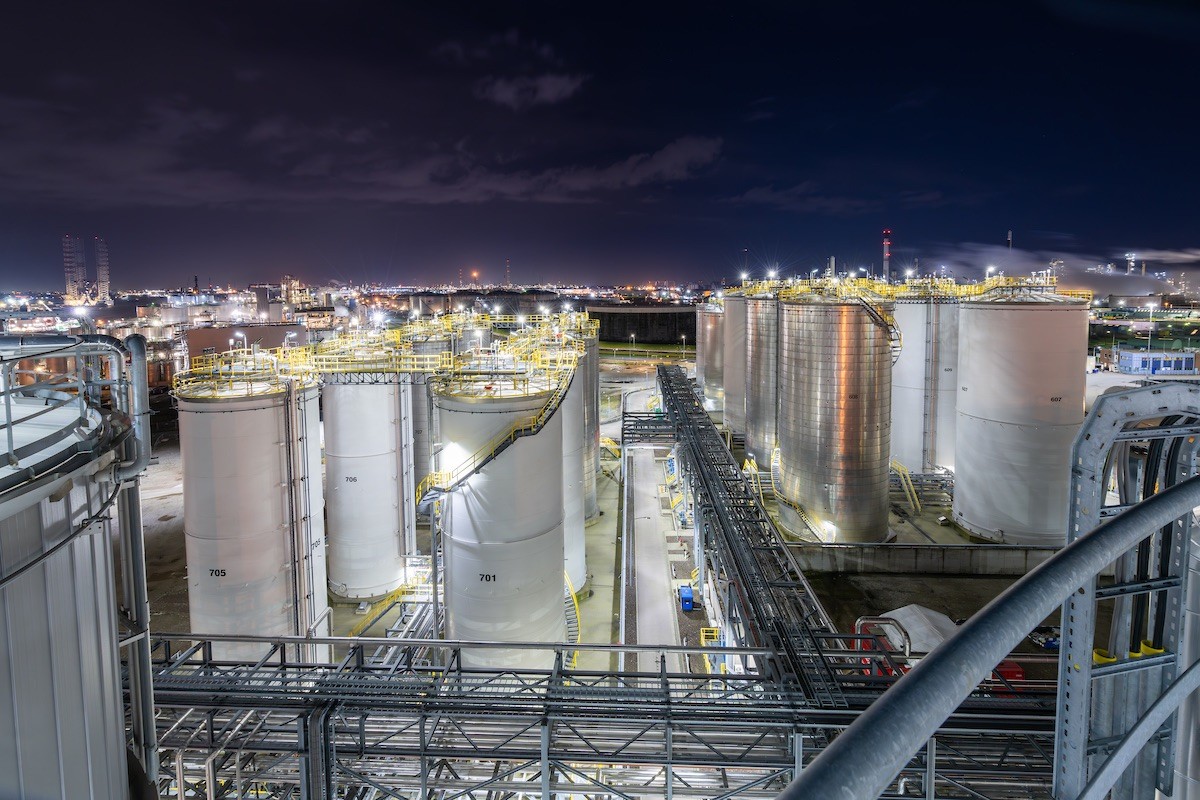The Paris-based Rubis Group, one of the global market leaders for storage and distribution of industrial liquid bulk products, have come back to Dialight for the second phase of a total conversion to LED Industrial Lighting throughout its state-of-the-art terminal for the storage of mineral oil products and chemicals in Rotterdam.

The decision to return to Dialight is a result of the success of the new-build Terminal II project in 2016, where Dialight’s ATEX-certified industrial LED’s were specified and are currently still saving the company up to €100,000 annually, backed by Dialight’s industry-leading 10 year warranty. The fittings’ exceptional sustainability, superior performance, reliability and corrosion resistance to salt spray from the adjacent North Sea, combined with up to a 60% reduction in energy consumption and cost has helped Rubis achieve zero-emission operations to meet both company and governmental environmental requirements.
Located in Botlek Chemiehaven, with a gross storage capacity of 277,000 CBT, Rubis Terminal Rotterdam specialises in the storage and transshipment of petrochemicals, specialty chemicals and biofuels. Originally constructed in 2008, with a second phase completed in 2016, the terminal boasts 66 separate tanks ranging in size from 1,200 to 12,700 CBT with state-of-the-art technologies and five jetties producing a key competitive edge.
Stephan Cappon, Rubis Terminal Electrical & Instrumentation (E&I) Maintenance Supervisor, commented, “Those original Dialight fixtures are still in place and continue to deliver the same quality and performance as the day they were installed. We’ve seen no degradation of the light quality or lumen output, and aside from a little cleaning now and then, they’ve required virtually no maintenance, so that it only made sense to retrofit Terminal 1 and the entire facility with additional Dialight fittings.”
Rubis also faced a series of converging challenges that created a new sense of urgency for its continued lighting upgrade. The existing lights – mostly T8 or tube fluorescents – were extremely prone to failure due to salt spray and vibration, requiring replacement every six to 10 months. Because many were mounted in difficult-to-reach locations, each maintenance episode required scaffold-building, putting workers at risk and costing time and money in labour.
In addition, at the Terminal 1 harbour site, corrosive salt spray had weakened the legacy lighting fixtures to the point of failure very quickly. “With the salt spray, it’s pretty much the worst possible conditions you can imagine there for conventional lights,” Cappon said. “Just opening the fixture to change a bulb would cause the entire thing to fall completely apart, requiring a complete fixture replacement.”
Complicating matters, The Netherlands has recently banned production and use of fluorescent TL lighting in an effort to reduce greenhouse gas emissions, which made replacing the bulbs and fixtures extremely difficult, if not impossible. This issue, contrasted against the worry-free, low-cost and high-visibility of Dialight fixtures at Terminal II, made it a relatively easy choice to complete the site-wide conversion.
The retrofit project of Terminal 1 shortage has involved the fitting of over 180 fittings, mainly ATEX-certified, in a smooth and simple process which has been a huge advantage considering the shortage of skilled labor that has limited contractors’ time and resources.
Stephan Cappon added, “Our contractors love that the Dialight fixtures offer various mounting options and flexibility. The fixtures are easy to pre-wire and install on site which makes it much faster and easier, especially considering many areas are relatively inaccessible and hard to reach.”
“In addition, because of the fixtures’ outstanding light output and exposure, we have been able to reduce the number of fixtures needed to illuminate the same space. In many areas, particularly the truck/train loading station and tank pits, we have actually seen major improvement in visibility, which creates a much safer working environment.”
“The lighting performance, the low maintenance, sustainability, ease of installation and just the entire process of working with the Dialight team made them the only real choice for our facility. Because of this success, our corporate office has given us the encouragement, resources and budget to move forward, as we now have plans to complete our entire plant conversion to Dialight this year.”
Rubis Terminal’s progress toward zero-emission operations, including the use of Dialight high-efficiency fixtures, even earned the company the Terminal Innovation Award at the 5th Global Tank Storage Awards during 2022 StocExpo.
To learn more about Dialight’s class-leading industrial LED lighting solutions petrochemical facilities, please visit www.dialight.com.



